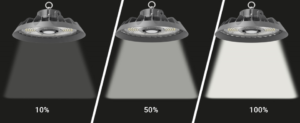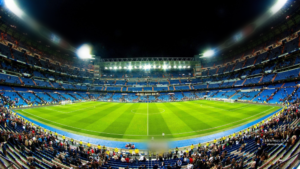What Are the EN12193 Lighting Standards for Different Sports?
Poor lighting affects player performance, safety, and audience experience. It also reduces the quality of video broadcasting.
EN12193:20181 is the European standard that defines lighting requirements for different sports venues. It includes lux levels, uniformity ratios, glare ratings, and color rendering for each sport and competition level.
If you want your sports lighting to meet professional standards and work well for real games, this guide is for you.
What Are the Lighting Requirements for Football (Soccer) Fields?

Football requires wide-area visibility, fast reaction, and even lighting for fair play.
According to EN12193, football fields need between 75 and 1500 lux depending on class level. High-level competitions require vertical illuminance and uniformity of ≥0.7.
Lighting Classes for Football
| Class | Application | Horizontal Lux | Vertical Lux | Uniformity (Min/Ave) | Glare (GR) | CRI |
|---|---|---|---|---|---|---|
| I | Professional / TV broadcasting | 500–1500 | 750–1000 | ≥0.7 | ≤50 | ≥80 |
| II | Amateur or club competitions | 200–500 | — | ≥0.6 | ≤50 | ≥60 |
| III | Training and school games | 75–200 | — | ≥0.5 | ≤55 | ≥60 |
Design Tips
- Use asymmetric optics to reduce glare.
- Install poles above 25m for better coverage.
- Maintain 5700K color temperature for focus and contrast.
My Experience
In a European project, we delivered 1200 lux with 0.75 uniformity using anti-glare lenses. The result met broadcast requirements and received great feedback.
What Are the Lighting Requirements for Basketball Courts?

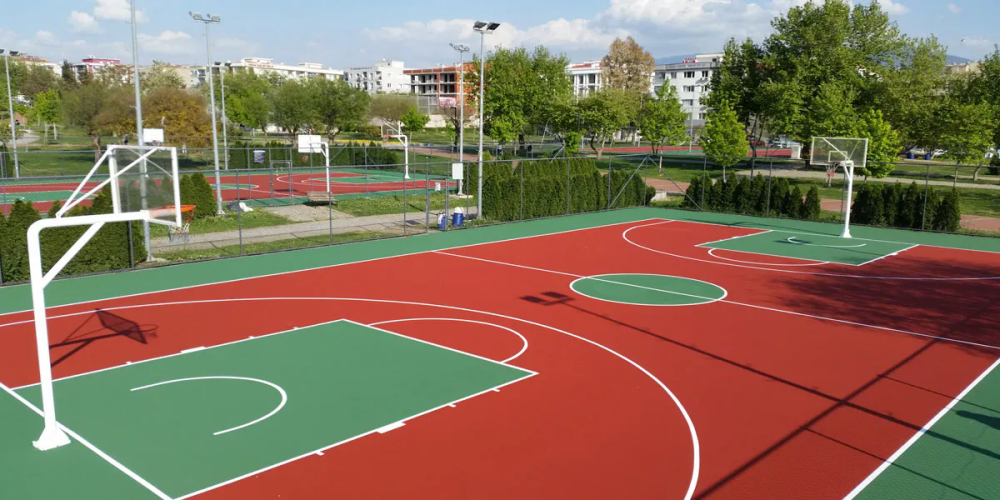
Basketball involves quick movements and indoor glare risks. Uniform lighting is a must.
EN12193 requires 200 to 1500 lux depending on game level. Indoor courts need high CRI and flicker-free lighting for recording and broadcasting.
Lighting Classes for Basketball
| Class | Venue Type | Horizontal Lux | Uniformity | Glare (GR) | CRI |
|---|---|---|---|---|---|
| I | International / national games | 750–1500 | ≥0.7 | ≤50 | ≥80 |
| II | Club-level matches | 500–750 | ≥0.6 | ≤50 | ≥60 |
| III | Practice or school games | 200–500 | ≥0.5 | ≤55 | ≥60 |
Design Tips
- Use wide beam optics for better spread.
- Install flicker-free drivers for TV.
- Maintain CRI ≥80 for accurate colors.
My Experience
In an indoor basketball court project in Southeast Asia, we followed the EN12193 Class II standard by delivering around 650 lux on average with a CRI above 80. The lighting was designed to ensure uniform brightness across the court and visual comfort for players during club-level training and competitions.
What Are the Lighting Standards for Tennis Courts?
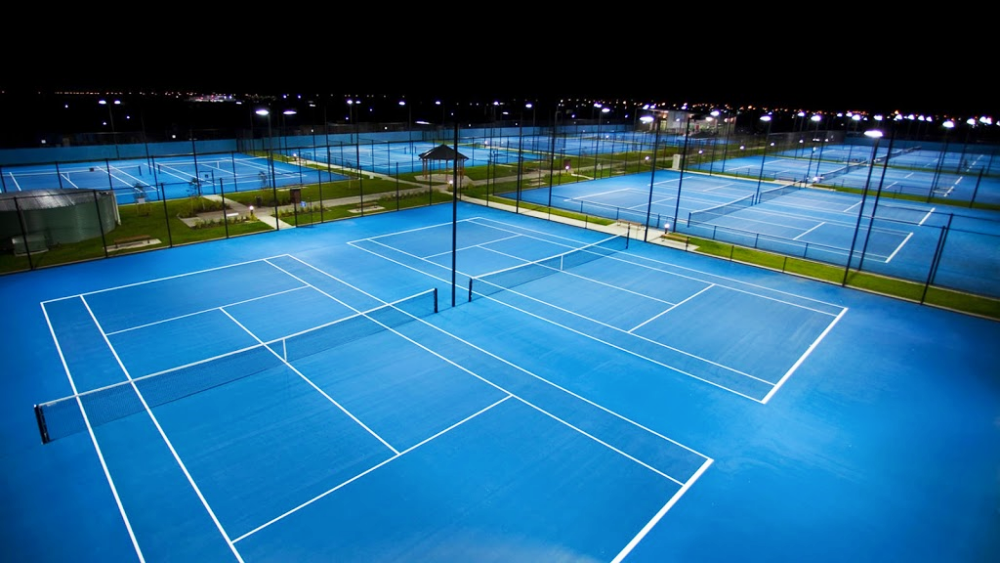
Tennis balls move fast and need clear tracking under bright lights. Shadows and glare are key issues.
EN12193 recommends 300 to 750 lux. Pole placement and glare control are critical to ensure fairness.
Lighting Classes for Tennis
| Class | Application | Horizontal Lux | Uniformity | Glare (GR) | CRI |
|---|---|---|---|---|---|
| I | Professional competitions (TV) | 750 | ≥0.7 | ≤50 | ≥80 |
| II | Club games | 500 | ≥0.6 | ≤50 | ≥60 |
| III | Practice | 300 | ≥0.5 | ≤55 | ≥60 |
Design Tips
- Use narrow beam fixtures to reduce overflow.
- Space poles to avoid net shadows.
- Shield light from nearby courts.
My Experience
We upgraded a tennis club in Australia to meet EN12193 Class II standards by providing an average of 500 lux on the court with a CRI of 80. We used asymmetric beam optics to reduce glare and improve uniformity, ensuring better visibility for players during evening matches.
What Are the Lighting Requirements for Baseball?
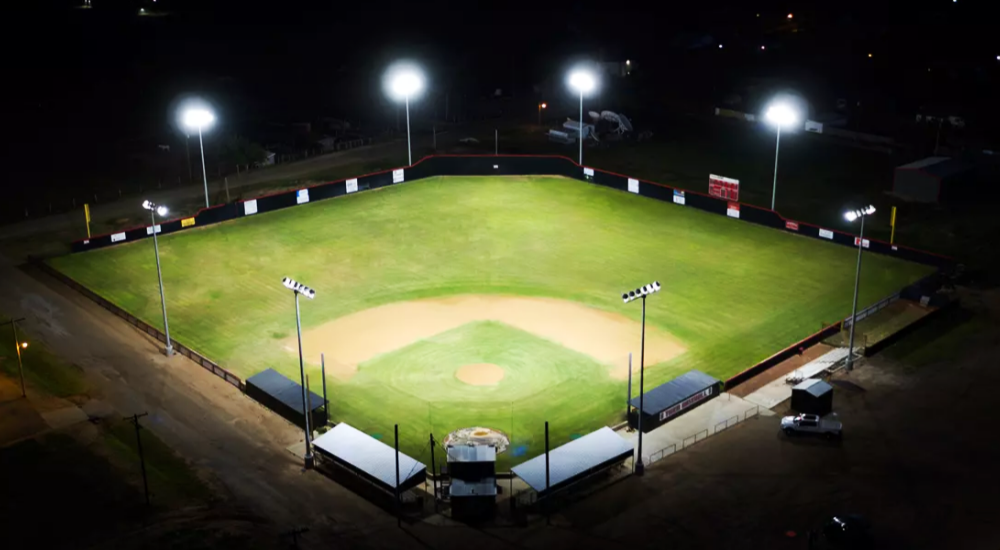
Baseball fields are large and have uneven activity zones. The infield demands brighter lighting due to frequent and fast action, while the outfield needs wide, uniform coverage.
While EN12193 doesn’t include baseball directly, most lighting standards recommend different lux levels for infield and outfield zones, typically ranging from 300 to 1500 lux depending on the level of competition.
Recommended Lighting Levels
| Area | Competition Level | Horizontal Lux | Uniformity | CRI | Notes |
|---|---|---|---|---|---|
| Infield | Professional / Broadcast | 1000–1500 | ≥0.7 | ≥80 | Fast play, ball tracking |
| Outfield | Professional / Broadcast | 700–1000 | ≥0.6 | ≥70 | Long-throw lighting needed |
| Infield | Club matches / Training | 500–750 | ≥0.6 | ≥70 | |
| Outfield | Club matches / Training | 300–500 | ≥0.5 | ≥70 |
Design Tips
- Use high poles and narrow beam floodlights for the outfield.
- Aim for higher CRI in the infield where ball interaction is frequent.
- Minimize shadows near bases and pitcher mound.
My Experience
We worked with a baseball training ground in East Asia to improve lighting for evening practice. Based on the client’s goals and usage, we installed 1000 lux in the infield and about 700 lux in the outfield. The layout followed standard practice guidelines and gave players a stable, glare-controlled environment without overlighting areas that weren’t in use.
What Are the Lighting Standards for Rugby?

Rugby is a contact sport with wide fields and fast movement. Lighting must support full-field visibility and player safety under tough outdoor conditions.
EN12193 defines rugby lighting levels based on competition class, ranging from 200 to 1500 lux. Higher levels are used for professional games with television coverage.
Lighting Classes for Rugby
| Class | Application | Horizontal Lux | Uniformity | Glare (GR) | CRI |
|---|---|---|---|---|---|
| I | International / TV broadcast | 1000–1500 | ≥0.7 | ≤50 | ≥80 |
| II | National or club matches | 500–1000 | ≥0.6 | ≤50 | ≥70 |
| III | Recreational / Training use | 200–500 | ≥0.5 | ≤55 | ≥60 |
Design Tips
- Use asymmetric optics to reduce spill light near sidelines.
- Choose floodlights with strong weather resistance (IP66+).
- Lighting uniformity is key to avoiding visual confusion during rapid movement.
My Experience
In a rugby field project in the Middle East, we followed EN12193 Class II standards and delivered approximately 750 lux on the playing surface. The lighting provided balanced visibility across the full field and met the needs of regular club-level matches. The client appreciated the stable performance and reduced maintenance compared to their older lighting system.
What About Cricket, Ice Hockey, and Swimming?
These sports each bring unique lighting needs—whether it’s a large outfield, reflective ice, or water surfaces. Proper design must balance brightness, comfort, and energy use.
EN12193 provides detailed guidance for swimming and ice hockey. Cricket lighting typically follows local authority or ICC-based standards.
Summary Table
| Sport | Class I Lux | Uniformity | CRI | Notes |
|---|---|---|---|---|
| Cricket | 1500 (Pitch) / 1000 (Outfield) | ≥0.7 | ≥80 | Large field; needs long throw |
| Ice Hockey | 1000–1500 | ≥0.7 | ≥80 | Cold environment, high glare risk |
| Swimming | 750–1000 | ≥0.7 | ≥80 | Control reflections on water |
Design Tips
- Cricket needs tall poles and narrow beam floodlights for deep field reach.
- Ice hockey requires anti-glare and cold-resistant fixtures with IK10 rating.
- For swimming, use side or indirect lighting to avoid direct reflection on the surface.
My Experience
For a multi-sport facility in Europe, we worked on the swimming hall and ice rink. We used 850–900 lux lighting with high CRI and anti-glare design, especially in the ice arena where reflections were an issue. Instead of pushing lux levels too high, we focused on optical design and aiming angles to create a comfortable and functional environment that matched real usage needs.
What Is the Full Process of Doing Sports Lighting?

You can check iShineLux’s sports light to explore the fixtures suitable for outdoor sports fields.
Even the best lights won’t work well without a good plan.
A full sports lighting project includes more than installing fixtures. It requires site evaluation, simulation, product selection, wiring, installation, and testing.
Steps We Follow
| Step | Description |
|---|---|
| Site Check | Measure field size, pole height, and usage needs |
| Design | Use DIALux to simulate the lighting effect |
| Choose Lights | Pick wattage, beam angle, and quantity |
| Wiring | Plan electrical layout and control system |
| Install | Mount and aim lights correctly |
| Test | Measure lux levels, uniformity, glare, and CRI |
We provide free DIALux lighting layouts to help clients visualize the effect before purchase. This ensures accuracy, saves cost, and builds trust.
Conclusion
We hope this guide helps you better understand how each sport has its own lighting needs. By following EN12193 and using the right design plan, you can deliver safe and professional lighting for any venue. Let’s build better visibility—together.
-
Explore this resource to understand the comprehensive lighting standards set by EN12193:2018 for various sports, ensuring optimal performance and safety. ↩



